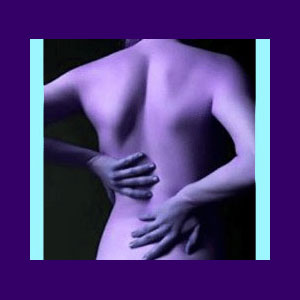
Experiencing a first back pain episode is a frightening and physically disabling ordeal. Unfortunately, many patients are not limited to just one episode of back ache, but instead endure a steady procession of flare-ups, often eventually creating a chronic pain conundrum. Episodes of acute pain leave patients feeling powerless and disenfranchised from life. This is particularly true when they seek treatment in hospital emergency rooms and are typically dismissed, after hours of waiting, with a few pain pills and a recommendation to follow-up with their own doctor. This is true insult on top of injury.
I have been subjected to this kind of torture on more than one occasion, but have learned greatly from the experience.
Single Back Pain Episode
People who only endure a single episode of dorsalgia are very lucky, but are statistically in the minority. These people typically suffer some form of minor structural back injury, often to the soft tissues, such as a pulled back muscle, some general back strain or just agonizing overuse. Remember that structural concerns, such as these, typically will heal just fine, as long as the person is careful not to continue to abuse the affected area, allowing enough time for the injury to resolve.
Acute back pain can be truly terrifying, since the torment can be severe and debilitating, even when the causation is an insignificant concern. Anyone who has ever hurt their back can attest to this personally. I know that I can. However, when only a single episode exists, the physical pain will fade and the patient is unlikely to suffer any significant psychological scarring. However, if the pain was severe, then it is likely that the pain will never be forgotten and will come up in conversation from time to time.
Recurrent Back Pain Episodes
Many patients who endure acute pain in the back at one time, will likely have it again in the future. These victims fall into three basic categories of patients, none of whom have an easy lot in life, once back pain stakes its claim for their bodies and souls:
Patient category one represents the best possible scenario, wherein a condition of recurrent acute back pain flare-ups exists, with extended periods of no pain in between. This is the type of pain I had for over a decade, in my early adult life. Patients are able to live relatively normal lives in between acute episodes, but may have trouble planning for the future, since they never know when back ache is going to strike again. Worse still, the longer these episodes occur, the more fear will develop.
Some patients immediately develop a pattern of chronic pain which never really goes away, while others may migrate from the recurrent acute condition to a chronic condition after months or even years of flare-ups. Less severe chronic pain represents patient category two. This is the type of pain I endured for over a decade, after many years of acute patterned attacks. Most category two patients find that once pain becomes chronic, it never truly leaves, but rarely flares-up with the intensity of original attacks.
Some unlucky patients have severe chronic pain every day, with regular flare-ups of debilitating back pain episodes sporadically. This third patient category is the very definition of hell on earth. The chronic agony is a daily reminder of suffering, yet when acute episodes occur, the patient is debilitated. These patients need targeted help in order to survive.
Are You Having a Back Pain Episode?
Having a positive attitude is key to overcoming any health crisis. Remember, no matter what the source of pain, the mind and body work together to resolve the causation and return the individual to full health. Have confidence that your body can heal, no matter if this is your first attack or your 100th.
I fully understand that this positive attitude can be challenging to achieve, if not impossible. Pain is a terrible burden to bear. Science has shown that chronic or recurrent pain is a primary cause of depression. Practical experience has proven that pain is also a contributor to poor self-esteem, anxiety, poor interpersonal relationships, abysmal career performance and a generally negative outlook on life. It’s just not easy to smile when you are in pain.
For patients who are tried to cure chronic pain, or recurrent episodes of pain, without success and are at their wits end, I suggest dissecting the experience of suffering from day one. If you have treated the pain correctly, but it remains, regardless of professional care, and even possible surgery, then there is a very good chance that the source of symptoms has been mistakenly identified all along. This is exactly how my own chronic lumber back pain story turned out.
I further suggest that you do your very best to separate the pain of the body from the health of the mind. If this is not possible, then life itself will become a heavy burden of misery.
If you are successful at separating the pain that plagues your body from the actual person that you are inside, at least you will maintain a positive outlook. This positivity means everything, when you consider overall health and wellness.
How do you cope with your back pain? Are these measures constructive or destructive? Can you survive indefinitely with your pain? These are all crucial questions to ask and even more vital to answer.





